Chandigarh: A day after the suicide of IPS officer Y Puran Kumar, his wife Amneet Kumar’s colleagues in the IAS association decided to conduct a solidarity meeting. Only those from minority and Scheduled Caste communities showed up.
“Officers from the caste of Mr Narender Bijrania (Rohat SP, now suspended) did not bother showing up. Not a single one. Not the young ones, even though they were in the secretariat,” a senior officer told ThePrint on the condition of anonymity.
The double suicides of ADGP Y Puran Kumar on 7 October and ASI Sandeep Lathar in Rohtak on 14 October have divided Haryana Police along battle lines. Caste, which lay beneath the khaki that officers wear every day, has now been brought to the fore. Surnames are determining solidarity. And in this fraught atmosphere, Dalits stand on one side and Jats on the other. Some say the suicides have shocked them out of helpless acceptance and propelled them to speak out against the unspeakable ‘c’ factor in the police force; others have retreated into silence. The defenders say that promotions and postings are done on merit even if it comes after long delays. But what everyone agrees on is that the Haryana Police force won’t be the same again after this week.
While the IAS officers’ association had demanded a strong FIR against the accused in Puran Kumar’s suicide letter, the IPS association had simply expressed condolences.
Bureaucracy’s age-old boy groups, elitism, and casteism are all sitting on the interrogation table. While some officers insist that Indian police is the least casteist organisation in the country, others press on that the police is no different from the society it functions in. Caste decides whether one gets a seat at the table.
“An SC/ST officer has the influence and respect of being a commissioned officer among the masses. But when you are with your own people, you are discriminated against as a person who belongs to a Scheduled Caste community, who never deserved to be in the services because you’ve come from reservation,” Hardeep Singh Kingra, who retired as the commissioner of SC/ST finance and development commission, said.
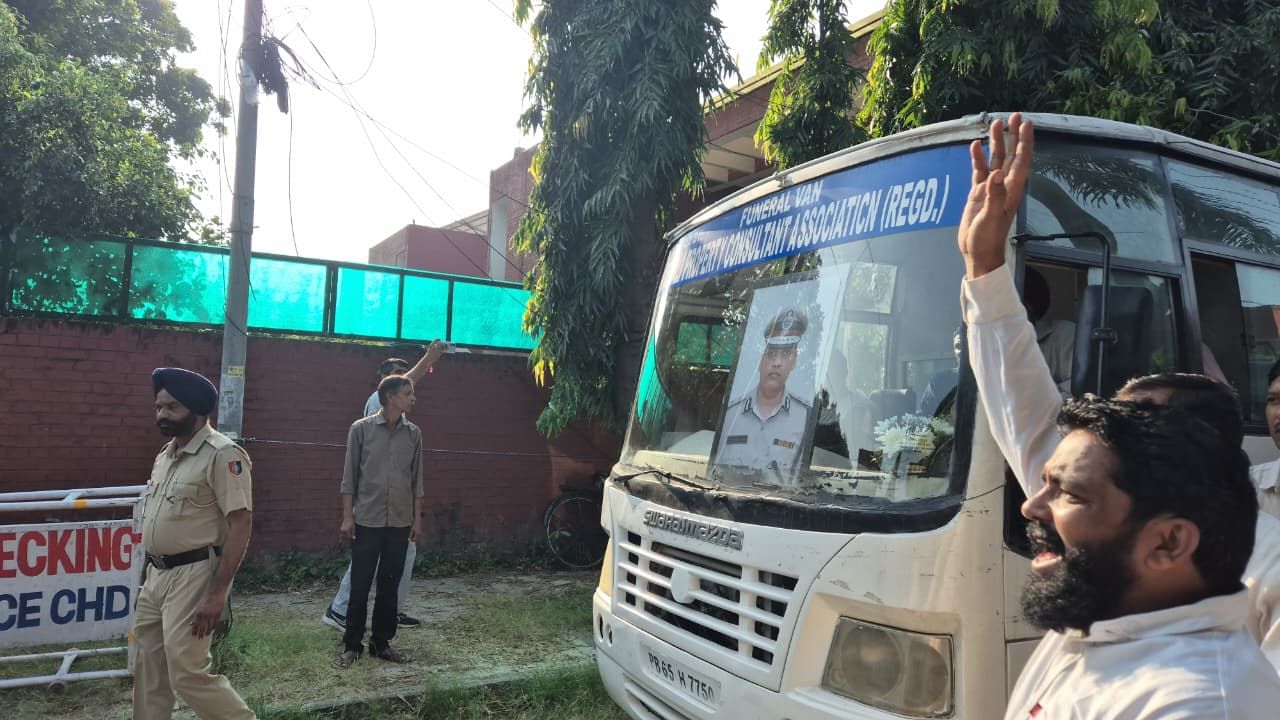
Also read: Caste differences in govt bodies affect how lower castes get public services: Study
Y Puran Kumar’s suicide
When Y Puran Kumar’s body was brought out of his house, the crowd gathered outside raised slogans, describing him as a “martyr” who laid his life for the cause of Dalits in the bureaucracy.
“Puran Kumar amar rahein,” chanted Dalit activists. “Puran Kumar aur Babasaheb ek hain, ek hain.”
A fleet of police cars stood outside as white chrysanthemums were pulled out to be placed on his body.
On 16 October, Kumar’s wife, IAS officer Amneet Kumar, finally gave her consent for Kumar’s cremation, nine days after his body was recovered with an eight-page suicide note alleging caste-based discrimination by his seniors.
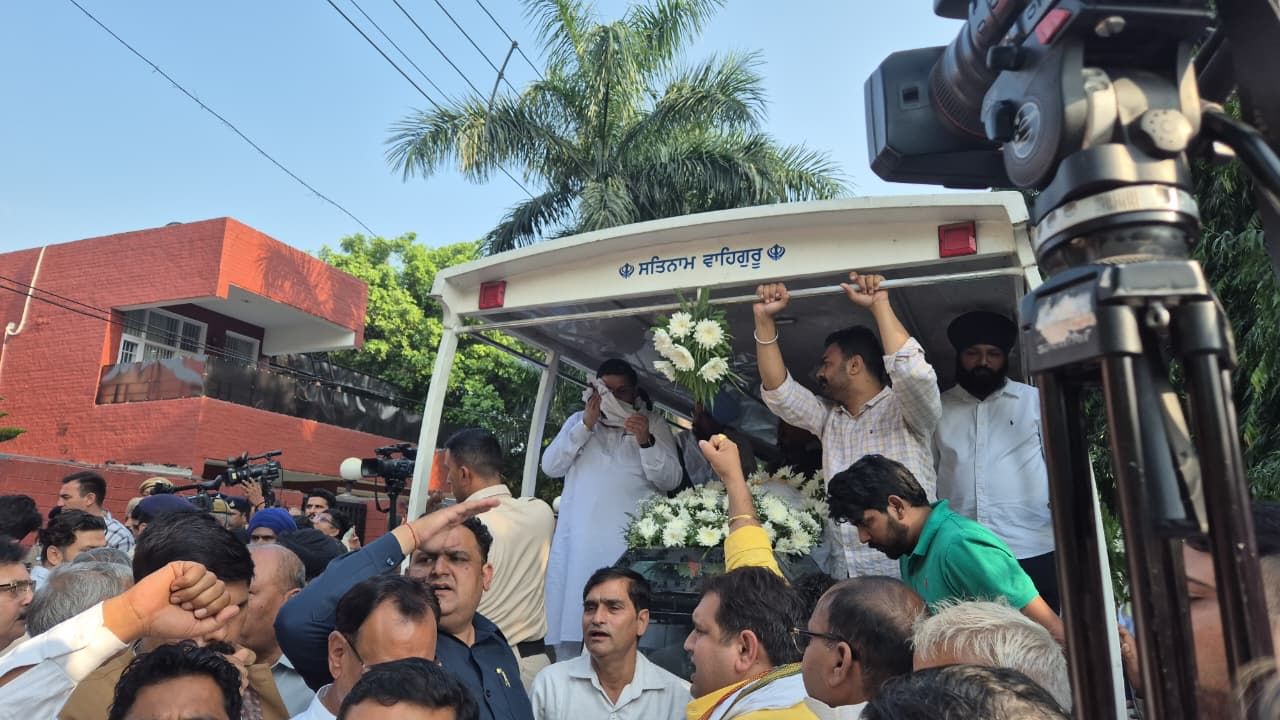
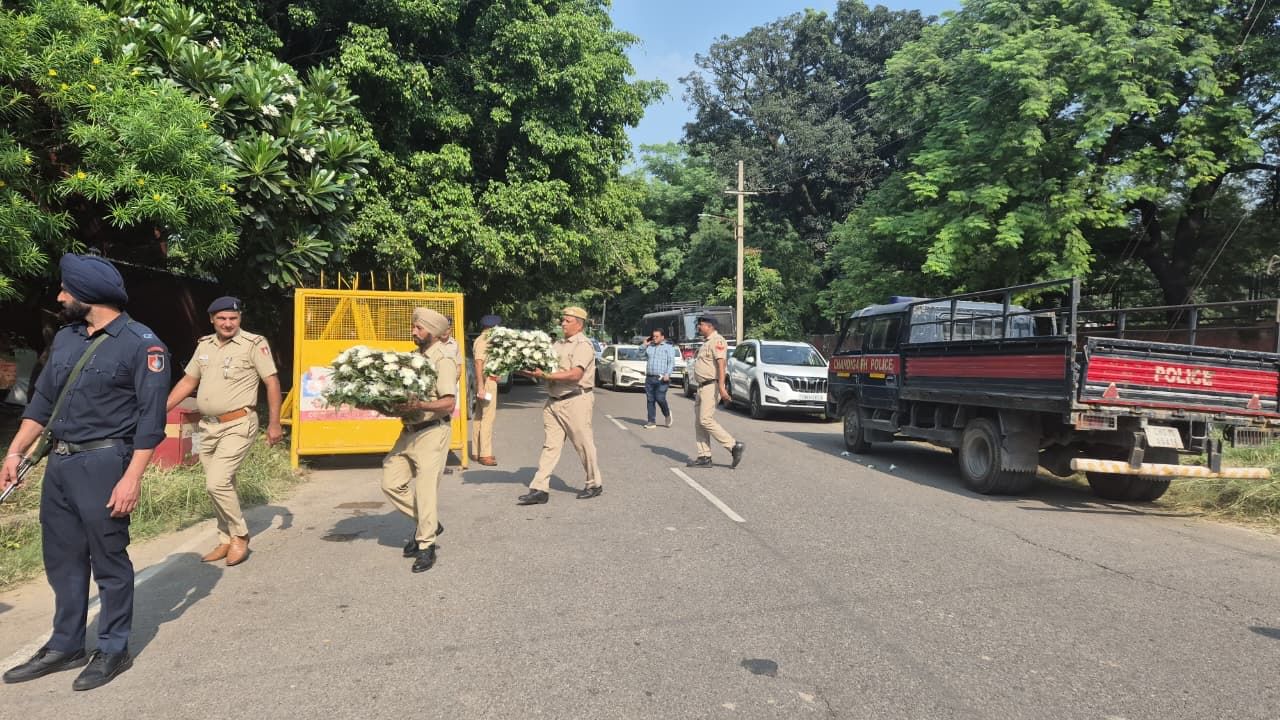
In the note, Kumar named nine serving and one retired IPS officers, including Haryana DGP Shatrujeet Kapoor and Rohtak SP Narinder Barjaniya, along with three retired IAS officers.
The ultimate trigger for Kumar’s suicide seems to be the arrest of his gunner, head constable Sushil Kumar, for allegedly demanding a bribe of Rs 2.5 lakh.
The tension in Haryana police force was visible at the cremation, with Kumar receiving the guard of honour under heavy security.
Even the Indian Administrative Service is battling a fraught atmosphere, following the deadlock between Amneet and the government after her allegation that the FIR registered was ‘incomplete’.
Amneet said Kumar had told her how he was being targeted because of the complaints he had filed, and that he feared he would be implicated in a false case. She also said her husband was subjected to caste-based slurs, excluded from temple prayers within the police complex, mentally harassed, and often publicly humiliated.
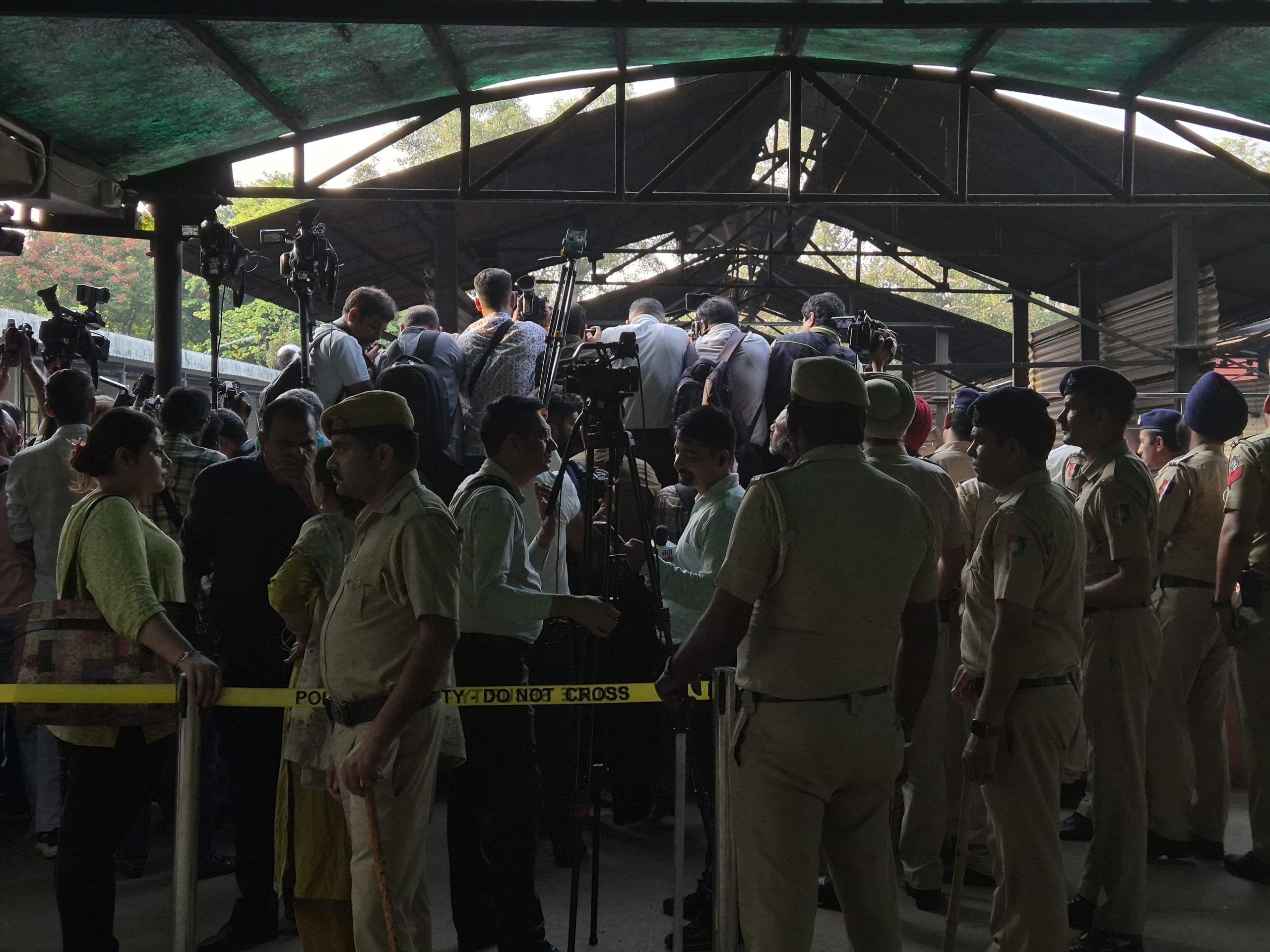
Also read: Haryana IPS officer’s case takes murky turn. ASI found dead, ‘final video’ alleges corruption
‘Experience not his alone’
Retired bureaucrats from the Dalit community say Puran Kumar’s experiences weren’t different from their own.
“I had faced untouchability in the forces myself,” SR Darapuri, a former IPS officer from Uttar Pradesh, said.
“[It’s] just like colleges, where a person qualifying through the reserved quota has to face the stigma of being somehow inferior to those who come from general seats,” a retired Haryana cadre officer said on the condition of anonymity. “Officers can look down upon us, we’re never fully integrated or made to feel welcome in upper-caste groups,” he said.
Kingra said he has sat in secretary-level meetings in Delhi where officers made fun of the ‘quota system’.
Officers can look down upon us, we’re never fully integrated or made to feel welcome in upper-caste groups
“I would object to such comments and discrimination. And even though I am not from the Dalit community, I’d advocate for Dalit rights. So when a list of officers was posted on a notice board, the word ‘SC’ was suffixed after my name.”
Dalit officers, serving and retired, insist that they’re overlooked for plum postings in both police and administrative services.
“At least 15 per cent of IAS officers are from the Dalit community. Only 7.5 per cent of SC officers are empaneled, 7.3 per cent are joint secretaries, and as secretaries, it’s not even 0.2 per cent. Fifteen per cent become useless while they’re serving itself,” a senior officer said.
ThePrint earlier reported how D Suresh, a 1995-batch IAS officer, has informed Chief Minister Nayab Singh Saini of discrimination against economically-weaker sections under the watch of DGP Shatrujeet Kapur.
“As resident commissioner of the Haryana government in Delhi, I receive the CM whenever he comes here. I apprised him of how officers from the SC community, or those from a weaker background, are targeted by manufacturing false evidence against them,” he had told ThePrint.
Also read: As HC asks UP DGP to justify mentioning castes in FIRs, a look at past court rulings on the practice
ASI suicide
The case took a murky turn after the suicide of ASI Sandeep Lathar in Rohtak. He was part of the search team that had arrested Puran Kumar’s gunman. Sandeep too left behind a suicide note along with a video.
In it, he accused Puran Kumar and Amneet of corruption and hailed Bijraniya as an honest cop.
“The day this IG (Kumar) was posted, he began noting the caste of each employee in the office and started transferring them, replacing them with his corrupt associates,” the ASI alleged in the video.
He called himself a fan of Bhagat Singh and said he was “laying down his life for a cause”.
Just like the family of Y Puran Kumar delayed the post-mortem and cremation for Kumar’s body, Sandeep’s family, which Haryana CM Nayab Saini visited, has resolved not to cremate the body until their demands are met.
Now, Amneet Kumar and her brother, Punjab MLA Amit Rattan, have been booked for Sandeep Lathar’s suicide.
In Haryana, Khaps have also entered the political fray. Two Khap panchayats — Majra and Kandela— came out in the support of Puran Kumar’s family and demanded a judicial probe into his death.
In Rohtak, Khap panchayats banded together to oppose unilateral action against Bijraniya, who they argued was transferred before he was allowed to present his side.
“It’s very strange the way Khaps have rallied behind Jat officers, since Puran and Amneet are from the SC community. Just a year ago, Jats and Chamars were expressing solidarity together,” a senior IAS officer said. “The language and conduct of the Khaps are no different from the elites in Sector 16 and 17 of Chandigarh,” he added.
Fault lines are out in open
Other retired officers said that with social organisations jumping into the conversation, the situation is spilling out of control. The first issue is to control the temper of the police constabulary, they said.
“Except for reserved seats, almost all the constabulary seats comprise people of the Jat community in Haryana. Extra caution has to be taken to ensure they’re not aggrieved,” the retired officer said.
Most IPS officers, serving or retired, are too squeamish to comment on the issue at all but insist that one incident should not besmirch the reputation of the organisation.
“Police is the most fair, transparent, casteless organisation I have ever seen in any other part of society. A few tragic incidents can’t change the solid pillars of this great organisation,” one senior officer said.
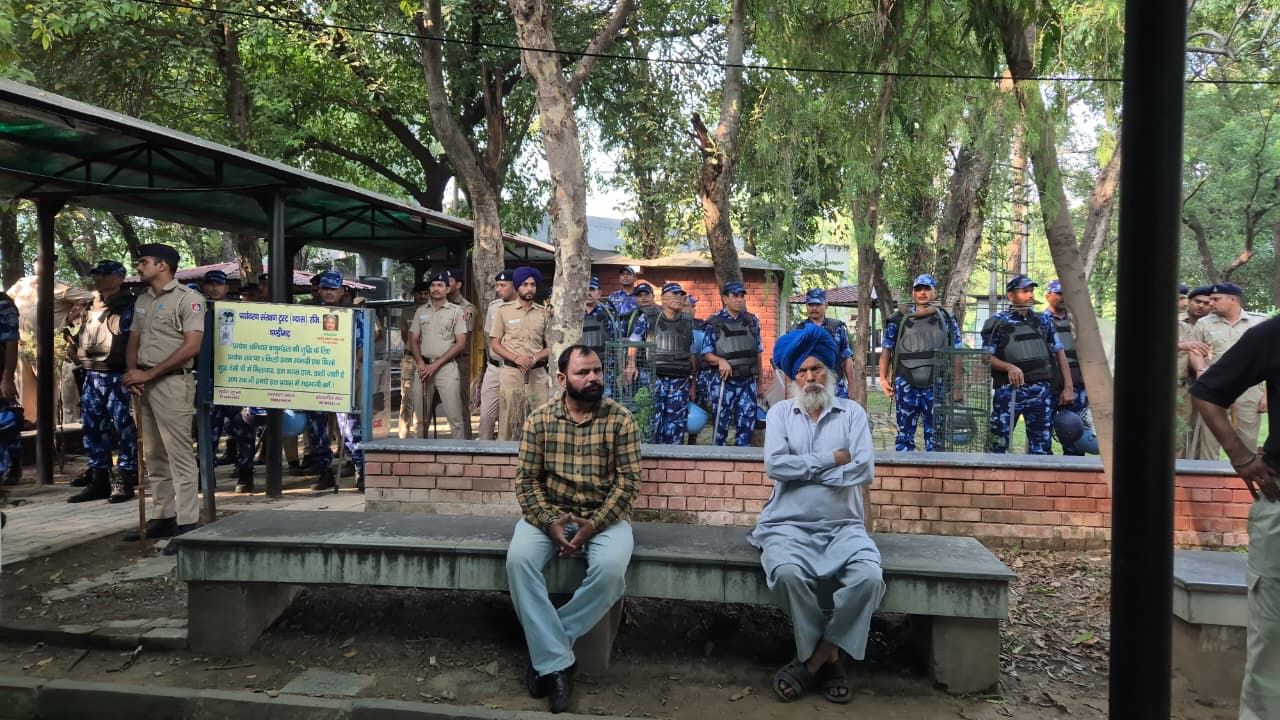
Another retired officer said: “There may be issues on an individual level, but they don’t exist on a systemic level. The services are equalisers,” he said.
But other officers, especially from the Dalit community, are urging their colleagues to look at the issue more deeply.
“There’s a sharp divide between the haves and the have-nots in the bureaucracy — between the Hindi bhashi and the English elites. This case has thrown open those fault lines, and it bears on us how willing we are to do some navel-gazing and look at reform,” another senior officer said.
As for Dalit leaders looking at the issue, this just proves that caste cannot be erased by any means.
“I have been a minister, and I have seen how Dalit issues are dealt with. We can be teachers, officers, or ministers, but our position in society simply never changes,” said Sandeep Valmiki, former minister of women and child development who was also at the cremation of Y Puran Kumar.
(Edited by Prashant)



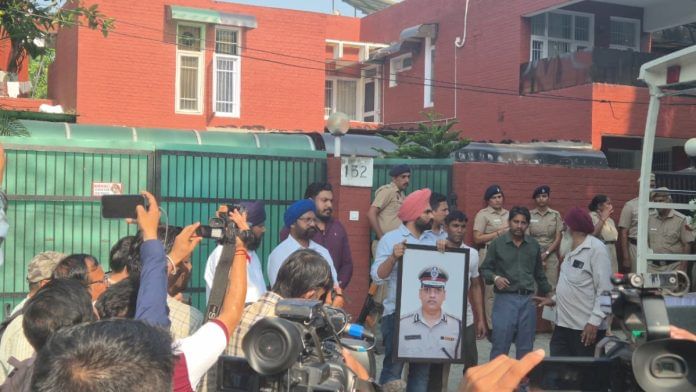



The suicide of Y Puran Kumar is quite puzzling. I find it difficult to believe that an IPS officer, married to an IAS officer, and who is the brother-in-law of an MLA would be so afraid of a false case that he would take his own life. This needs to be thoroughly investigated. As for the other gentleman, Sandeep Lathar, what was the point of his suicide? Only God knows.